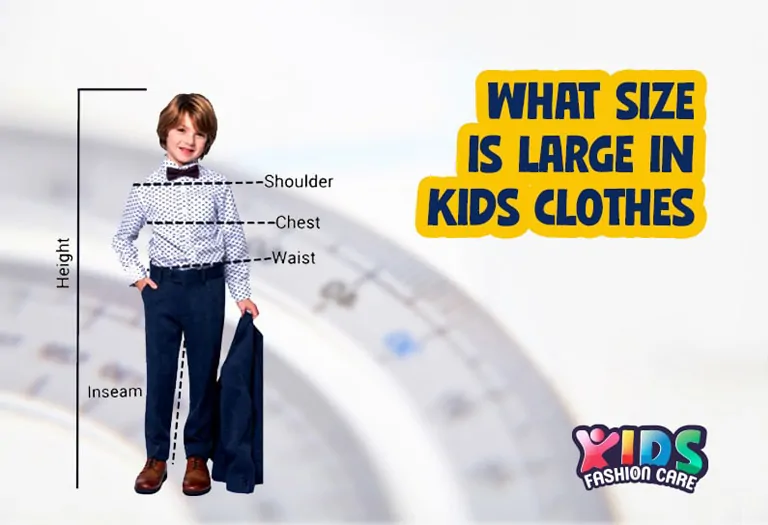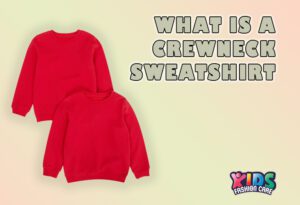Figuring out what large means in kids’ clothing is not difficult and by knowing the right size for your kids you can buy the perfectly fitted clothes for them.
In most brands, a Large (L) is designed for children aged 10 to 12 years. This size typically fits kids who are around 54-60 inches tall and weigh between 70-100 pounds. As sizes aren’t universal, a Large (L) in one brand might fit like a Medium (M) in another.
Seasonal styles, fabrics, and even regional differences can play a role in how large sizes fit. You can see that winter jackets come in a more loose fit than a regular t-shirt, in spite of being the same size.
Table of Contents
Shopping online for kids is stressful. Parents often complain how they end up buying the wrong size for their kids. The ill-fitted clothes look bad and no kids want to look bad at school or their special days. So buying the right fit for kids is crucial for any parents.
Kids’ clothes come in various sizes. But, what size is large in kids clothes? The sizes labeled “large” can vary significantly across brands, regions, and styles. The complexities of size charts can leave parents puzzled about finding the perfect fit.
I’m here to help you with the size chart of kids and it’ll reduce your frustration while shopping online or in-store. Let’s break down what “large” means in kids’ clothing sizes and how to find the perfect fit for your children.
Children’s Clothing Sizes: The Basics of Kids’ Clothing Sizes
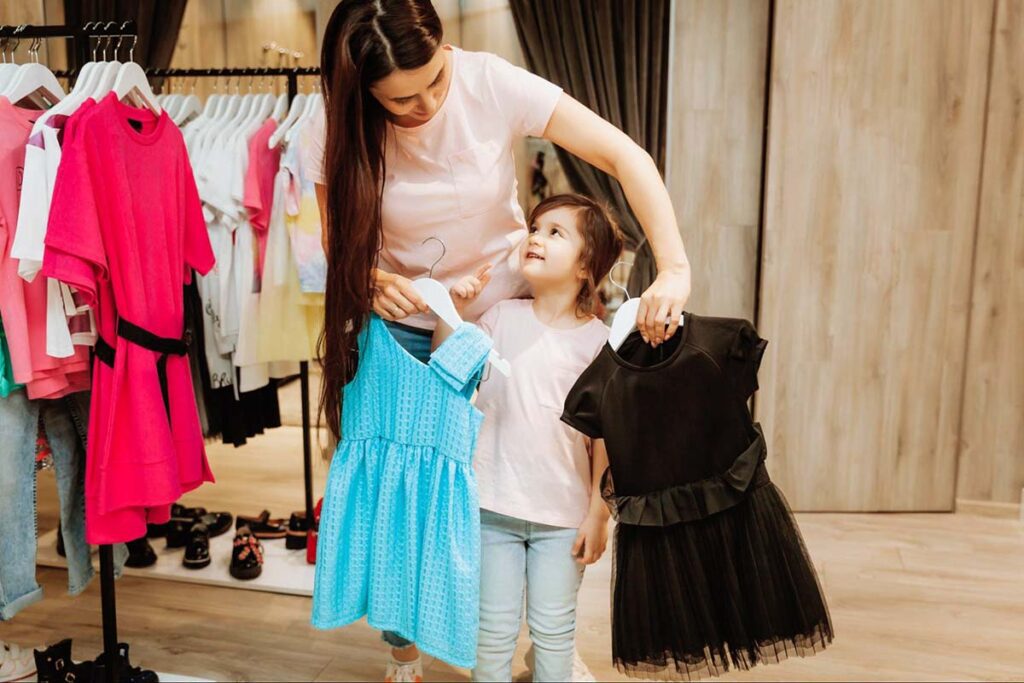
Buying kids’ clothes can feel like a puzzle, especially anyone unfamiliar with how sizing works. Adult’s clothing sizes usually follow standard numerical or lettered guidelines. But children’s sizes vary significantly based on factors such as age, height and weight.
Kids’ clothing sizes aren’t as straightforward as they seem. It’s more complex as brands and regions have their own sizing standards. So, it’s essential to understand the basics.
General Size Categories:
- Small (S): Younger children. 6-7 years.
- Medium (M): Typically for kids around ages 8-9 years.
- Large (L): Suited for older kids or preteens, roughly ages 10-12 years.
- Extra-Large (XL): Often for tweens or early teens. 12-13 years.
General Size Categories Explained:
- Small (S): Small size is typically designed for younger children. Sizes in this category usually fit children around 6-7 years old. But it depends on their height and weight.
- Medium (M): 8-9 years old kids generally fit the medium size. Sometimes, medium size can overlap with large sizes. Some brands M size can be L size for other brands. Brand-specific measurements or growth patterns can change the size.
- Large (L): Large sizes are perfect for older kids or preteens. L size fits generally between 10-12 years old. This category accommodates children who have outgrown medium sizes but haven’t quite transitioned to teen sizing.
- Extra-Large (XL): XL sizes are made for tweens or early teens. Depending on the brand, these sizes might also cater to children who have larger builds or are taller than average. XL typically fits 12-13 years old children.
Understanding “Large” (L) in Kids’ Clothes
If you are shopping for your kid in L size then you have to understand the Large size in clothing. By understanding these basic size categories and keeping an eye on your child’s growth patterns, you’ll feel more confident navigating kids’ clothing sizes and finding the perfect fit for your child. It’s important to note that this size is generally aimed at children nearing preadolescence.
For L size:
- Age range: 10-12 years old.
- Average height: 55-60 inches.
- Weight range: 80-95 pounds.
However, these are general guidelines for L size. Some factors like growth spurts, genetics, and individual body proportions can significantly impact how well a “large” size fits a specific child. While shopping you should follow the size chart provided by the brand. Because a brand’s clothing size chart can provide more precise measurements to ensure you’re selecting the right size.
Kids grow fast. Sometimes faster than you expect! Growth spurts can happen seemingly overnight. It makes it even trickier to find the perfect size. I’ve seen many parents often prefer buying clothes that are a little larger to ensure longer wearability. They do it especially when shopping online.
How Do Children’s Clothing Sizes Work?
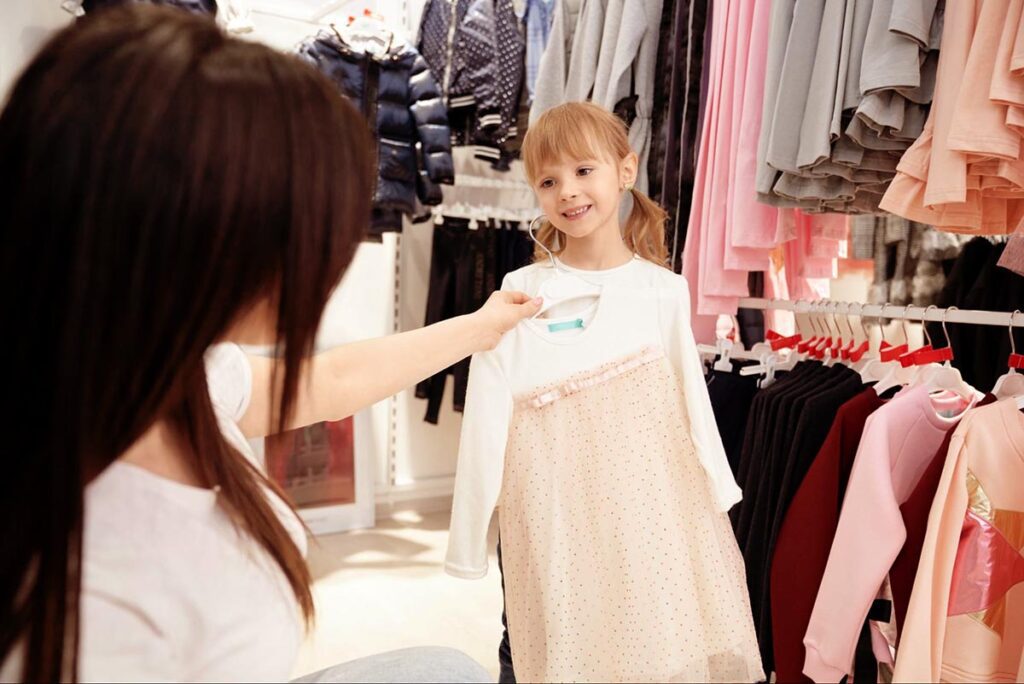
In the world of children’s clothing one size does not fit all. “Large” sizes from one brand might suit a child weighing around 80 pounds. While another brand’s “large” could comfortably fit a child weighing up to 100 pounds.
- Age-Based Sizing
Many children’s clothing brands use age as the primary guideline for sizing. You’ll often see labels like:
- 10/12: Meant for children around 10-12 years old.
- 12/14: Suited for slightly older kids, approximately 12-14 years old.
Age-based sizing is a helpful starting point. But age-based sizing doesn’t address the variations in height, weight, or body proportions. For instance, a taller-than-average 10-year-old might need a size 14, while a petite child of the same age might still fit into a size 8.
- Height and Weight Guidelines
Most brands include a clothing size chart with height and weight recommendations for each size. These charts help bridge the gap between a general size range (e.g., 10/12) and the actual fit.
For example, a typical size large (L) in U.S. brands might correspond to:
- Height: 55-60 inches
- Weight: 80-95 pounds
If your child is between sizes or has a unique body type then checking these charts is essential.
What Size Is Large (L) in Kids’ Clothes?
Understanding what “large” typically means can save you time and effort.
Standard U.S. Measurements for Large Sizes:
- Age: 10-12 years.
- Height: 55-60 inches.
- Weight: 80-95 pounds.
Differences Between Boys’ and Girls’ Sizes:
- Boys: Boys often have broader cuts for shirts and pants to accommodate different builds.
- Girls: Girls’ clothing may focus more on fitted styles and include designs like dresses or skirts.
International Variations:
- UK: Sizes might be listed by age but could use different increments (e.g., “11-12 years”).
- EU: Sizes are typically in centimeters, corresponding to the child’s height (e.g., 140 cm).
- Asian Sizes: Tend to run smaller, so ordering a size up is often recommended.
Children’s Clothing Size Conversion Charts: By Age Group
Children have different size charts depending on their age group. Baby, toddler, and kids have different size charts according to their age.
Sometimes, it can be trickier to find the right fit. Growth spurts, body proportions, and even brand-specific sizing can make it difficult.
Here’s a simple guide to clothing sizes by age group to help you navigate this process.
Baby Clothes Sizes (0-24 Months)
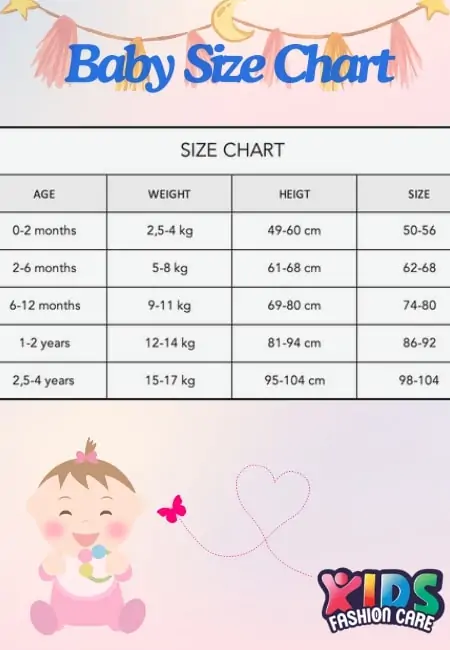
Baby clothes are often categorized by age in months and weight. However, not all babies grow at the same rate. When my first born was 3kg when she was 2 years old, my sister’s 2 years old son was 5kg. So, using a baby size chart can help you find the right fit for your baby.
- Newborn: 0-3 months, up to 7 pounds.
- 0-6 months: Fits babies up to 18 pounds.
Toddler Clothing Sizes and Kids’ Clothing Sizes (2-12 Years)
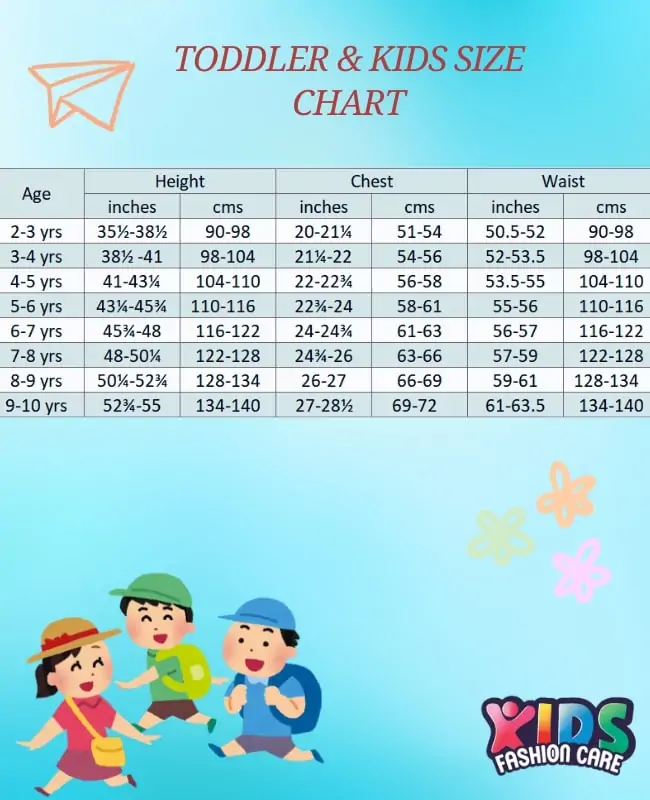
As babies transition into toddlerhood, their clothes are sized more by age and height. Toddler sizes often include “T” to differentiate them from kids’ sizes.
- 2T: For toddlers aged 2, approximately 35-38 inches tall.
- 3T: Slightly taller toddlers around 37-39 inches.
Once your child grows out of toddler sizes, kids’ clothing sizes come into play. Kids sizes are often labeled as small (S), medium (M), and large (L), with corresponding ages and measurements.
- Small (S): 6-7 years.
- Medium (M): 8-9 years.
- Large (L): 10-12 years.
Boys’ and Girls’ Sizes
While boys’ and girls’ clothing sizes often overlap in terms of age and measurements, they can differ slightly in fit and style. Girls’ and boys’ size charts often overlap but vary slightly in fit and design.
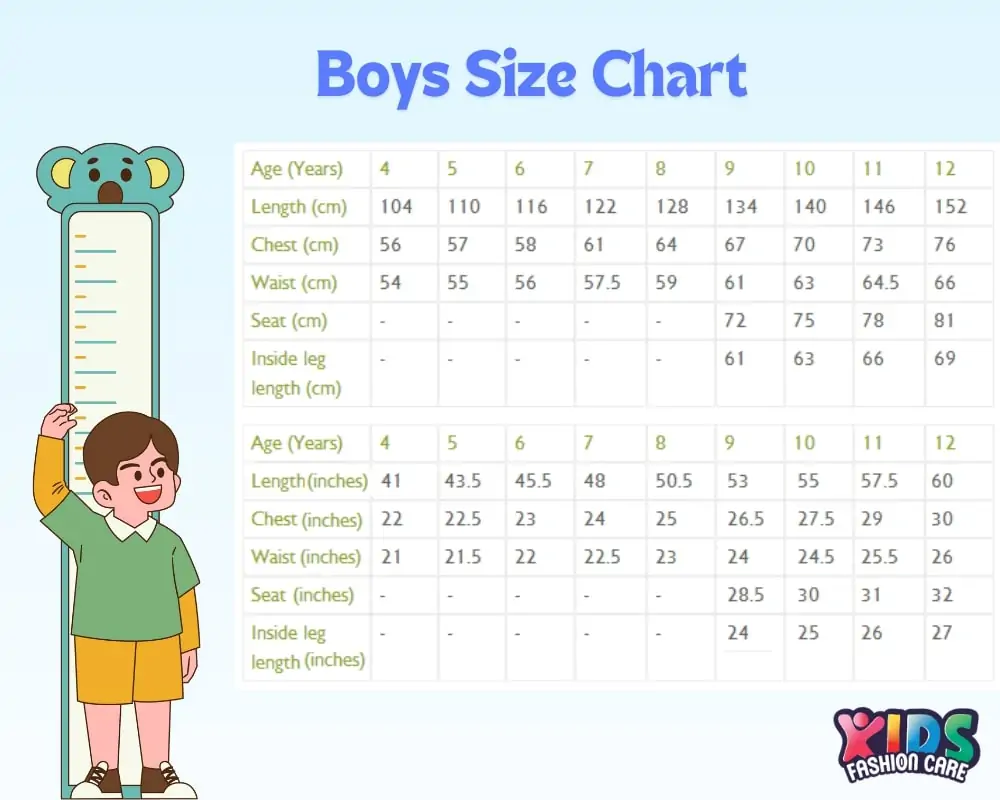
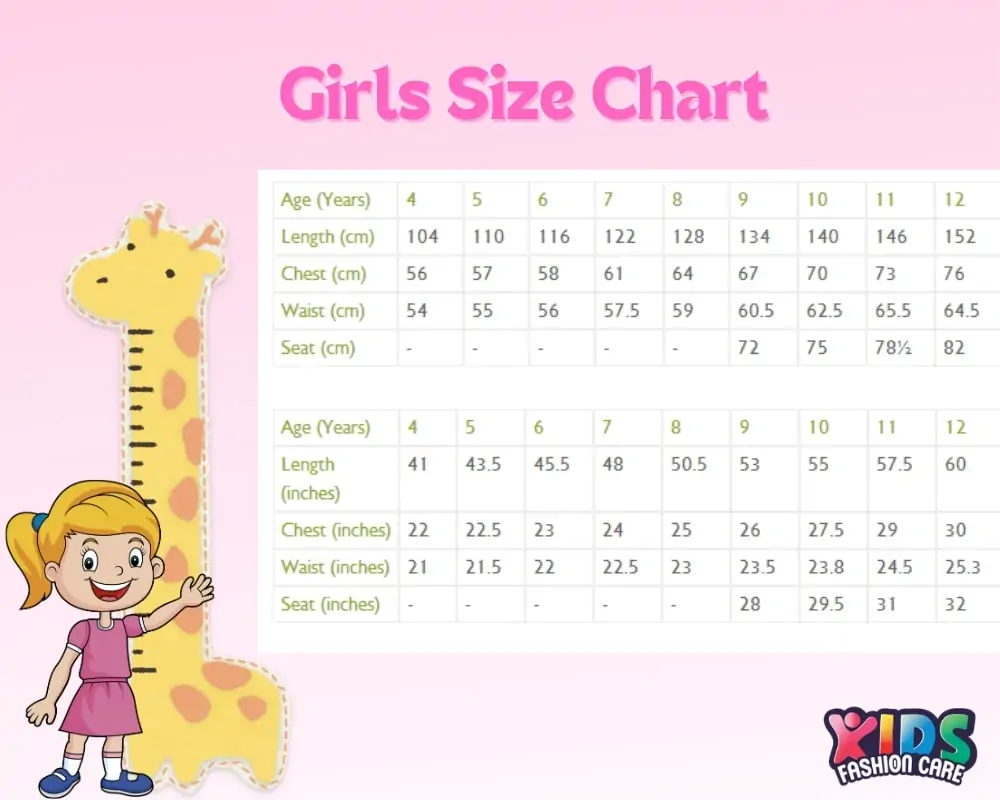
- Boys’ Sizes: Usually more relaxed in fit, with broader chest and waist measurements.
- Girls’ Sizes: Slimmer fits, sometimes with a slight taper at the waist.
Sizing Conventions Change Across Countries
- U.S.: Focuses on age ranges.
- UK and Europe: Uses height as the primary metric.
- Asia: Sizes are smaller. So buying a size up is common practice.
Also check out, What Size Shoe Does a 5 Year Old Girl Wear? A Shoe Guide.
How to Take Measurements for Children’s Clothing
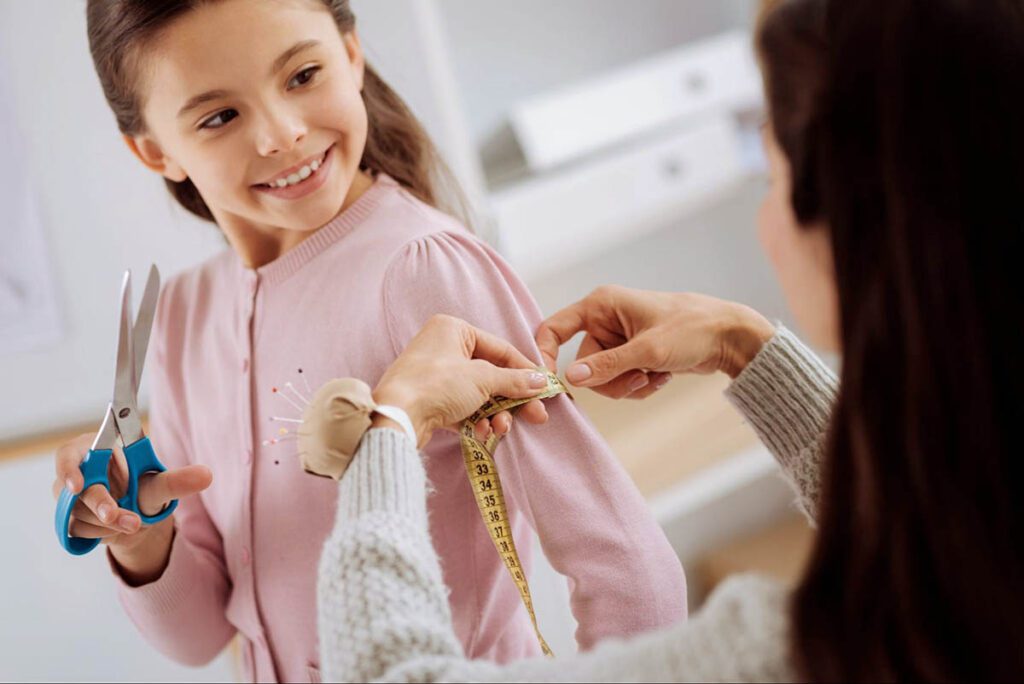
Knowing your kids’ measurements before shopping is necessary. Accurate measurements are the foundation of finding clothes that fit comfortably. Without the perfect fit clothes won’t look great on your child.
If you don’t know your kid’s measurement you’ll not understand which size will fit them even if you have the size chart. I always measure my kids’ size before I buy any clothes for them, because kids can outgrow their size within a few months.
Here’s a step-by-step guide to taking your child’s measurements.
Tools You’ll Need:
- A flexible tape measure (preferably cloth or vinyl).
- A notebook or smartphone to record measurements.
- A flat surface or wall for height measurements.
Step 1. Chest Measurement
The chest measurement helps determine the fit for tops, dresses, and jackets.
How to Measure:
- Have your child stand up straight with arms relaxed at their sides.
- Wrap the tape measure around the widest part of their chest. I measure around under the armpits and across the back.
- Ensure the tape is snug but not too tight and stays horizontal across the chest.
Step 2. Waist Measurement
The waist measurement is essential for bottoms like pants, skirts, and shorts.
How to Measure:
- Find out your child’s natural waistline. It is usually just above the belly button.
- Wrap the tape measure around this area. I keep it parallel to the ground.
- Make sure the tape is snug. I don’t make it too tight as it can be uncomfortable for breathing and movement.
Step 3. Height Measurement
Height is a critical factor in sizing, especially for dresses, full-length outfits, and coats.
How to Measure:
- Have your child stand barefoot against a flat wall with their back straight.
- Ensure their feet are together, and their heels touch the wall.
- Place a flat object (like a book) horizontally on top of their head to mark their height on the wall.
- Measure from the floor to the marked point.
Step 4. Inseam Measurement
For pants, knowing the inseam length ensures the correct fit and avoids dragging or bunching at the ankles.
How to Measure:
- Have your child stand with their legs slightly apart.
- Measure from the inner top of their thigh down to their ankle.
- If possible, use a pair of pants that fit well as a reference.
Step 5. Sleeve Length
The sleeve length is crucial for jackets, sweaters, and long-sleeve shirts.
How to Measure:
- Ask your child to extend one arm outward slightly.
- Measure from the shoulder seam to their wrist bone.
- Ensure the tape follows the natural curve of their arm.
Factors That Affect Size Labels
Sizes vary between brands, fabrics, and seasons. Here are some key things to keep in mind that might help you avoid those frustrating fitting room moments (or return trips if you’re shopping online).
- Brand-Specific Differences
Clothing sizes aren’t universal. Each brand has its own size chart. So, what’s considered “large” in one brand might not match up with another.
It even gets trickier when you factor in regional differences. European brands tend to use height measurements in centimeters. But American brands often rely on age-based sizing.
My tip for you is always double-check the brand’s size guide. Especially when buying from a new label or shopping online, double check the brand’s size guide.
- Fabric and Fit
The material and style of clothing can make a big difference in how it fits. Slim-fit styles hug the body more closely. So you might need to buy one size larger for comfort. Stretchy fabrics like spandex or elastane are more relaxing. They can accommodate growing kids better.
On the other hand, structured items, like denim jeans or formalwear are less flexible. So, it’s even more important to buy those items with accurate measurements.
If you are shopping online then read the product description carefully. Fabric details can give you a good sense of whether the item will have some give or feel more restrictive.
- Seasonal Variations
The time of year can also affect how clothing is designed and sized.
- Winter Clothes: Jackets, sweaters, and coats are typically made with extra room for layering.
- Summer Clothes: T-shirts, shorts, and sundresses are usually lightweight and snug for better breathability.
- Rain Gear: Items like raincoats and waterproof pants are often made a bit looser to allow for movement and coverage.
If you’re buying winter clothing then you should consider buying one size larger. In that way you’ll have enough space to layer for your kids.
Buying Online? Tips to Ensure the Right Fit
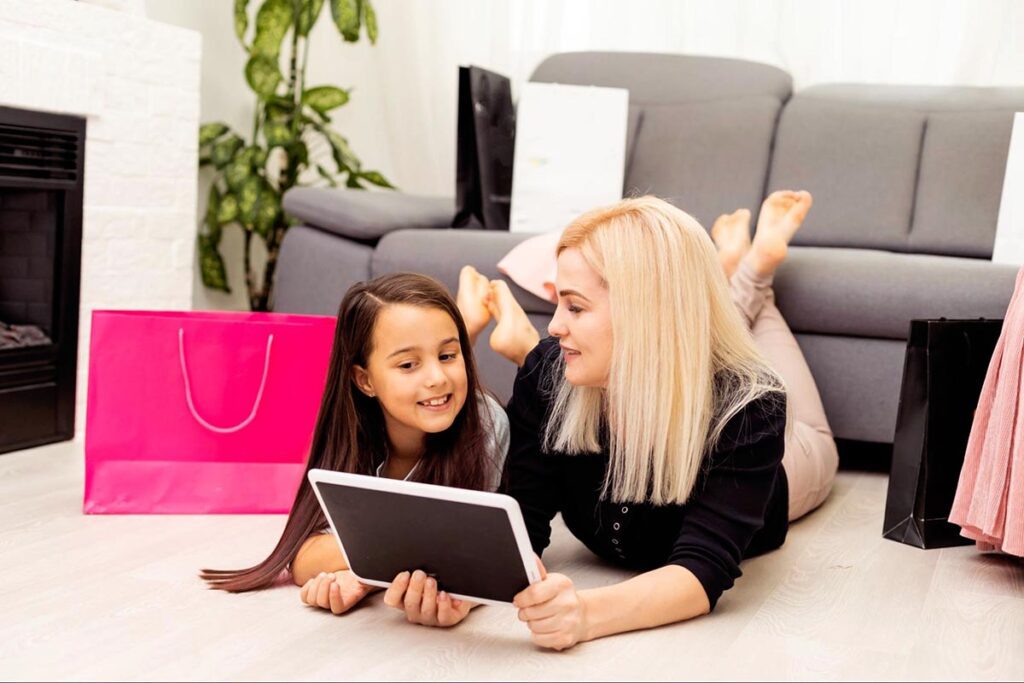
Shopping for kids’ clothes can be tricky both online and in-store. But with a few simple strategies, you can find the perfect fit every time. Here are some tips to help you out:
- Measure your child regularly
- Check the brand’s size chart
- Consider the fabric
- Prioritize comfort over size labels
- Shop slightly larger sizes to save time and money
- Take note of online customers’ reviews
- Keep receipts and know return policies
These are my tried and tested tips that I follow every time while shopping for my kids. By following these tips I not only save time and money but also ensure my kids are comfortable and confident in their new clothes.
Frequently Asked Questions (FAQs)
Question: How Big Is a 7 Year Old?
Answer: A 7 year old’s size depends on some factors. Kid’s gender, growth rate, and region determine what size they will be. In general, a 7-year-old is around 48-52 inches tall and weighs between 50-60 pounds. You can buy clothes size 7 or 7/8 category for a 7-year-old. Both Small (S) and Medium (M) sizes may fit a 7-year-old. So, check the size charts of the brand before making any purchase.
Question: What Size Is 28 in Children’s Clothes?
Answer: In children clothing size 28 refers to waist measurements in inches. Kids around 10-12 years old’s jeans waist size comes in 28. Some brands also use 28 as a measurement for height-based sizes in certain regions, so double-check whether it’s for the waist or height before purchasing.
Question: Is Size 10 Medium or Large?
Answer: Some brands refer to size 10 in kids clothing as the Medium (M) category. Though some brands may refer to size 10 in the Large (L) category. Size 10 is typically designed for kids around 8-10 years old. Since sizing varies by brand, it’s a good idea to review the specific size chart.
Question: What Size Is Baby 1?
Answer: Baby size 1 often refers to footwear sizes for infants. Newborns or babies under 6 months old, with feet approximately 3.5 inches long is perfect for Baby size 1. If you are buying clothes then sizes like 0-3 months or Newborn would be a more accurate indicator for a baby’s age or weight.
Conclusion
If you could learn how to identify the size of kids, then you can find out any size including Large (L). You can ensure just the right size for your kids by focusing on accurate measurements, size charts, and their growth spurts. A perfect fit assures that your kids are comfortable and stylish.
If you have any sizing tips for kids then feel free to share them in the comments. I’d love to hear from you.
Don’t forget to read, What Size Life Jacket for 100-Pound Kids? Finding the Perfect Life Vest.

